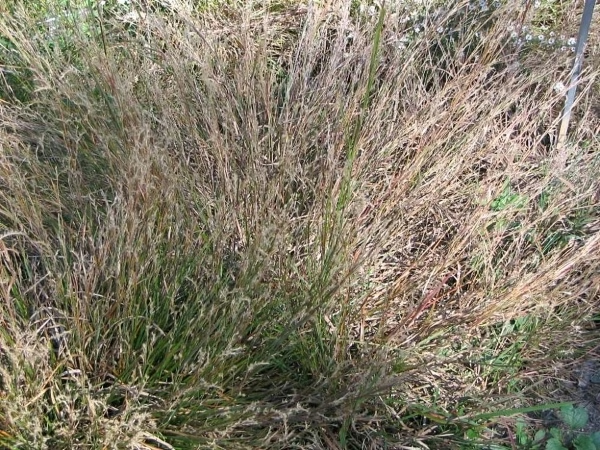
Little Bluestem
Botanical Name
:
Schizachyrium scoparium
Plant Type
:
Perennial, ornamental, warm season grass
Seasons
:
Grows actively in summer, flowers in late summer to fall
Sun Level
:
Full sun (6+ hours of direct sunlight)
Ideal Soil Temperature for Planting
:
65-75°F (18-24°C)
Soil Type
:
Well-drained soil; tolerates sandy, loamy, and rocky soils
Hardiness Zones
:
3–9 (USDA)
Germination
:
14-30 days, benefits from cold stratification
P.H. Level
:
5.0-7.5
Water/Irrigation
:
Once established, it is extremely drought resistant. For young plants light watering during summer will do
Fertilization
:
Needs no nitrogen application the first year, but in subsequent years will benefit from a high nitrogen fertilizer application in spring
Habit
:
Upright, clumping, fine-textured with blue-green summer foliage turning copper-orange in fall
Propagation
:
The seeds are established easily after spring rains wash them into the soil. The plants also grow side shoots which can be divided from the parent and transplanted
Final Plant Height
:
2-4 feet (60-120 cm)
Spread
:
2-4 feet (60-120 cm)
Spacing
:
Seed as a solid stand (8 inches or less row spacing)
Flowers
:
Fluffy seed plumes in a range of colors from blue to silvery gold or white that appear in late summer and persist into winter
Attracts
:
Birds (seeds in winter), pollinators, and other insects
Uses
:
Ornamental landscaping, erosion control, prairie restoration, meadow plantings, and wildlife habitat
Companions
:
Black-eyed Susan, Purple Coneflower, Switchgrass, Asters, Goldenrod
Pruning
:
Cut back in early spring before new growth
Toxicity
:
Cut back in early spring before new growth
Pests
:
Rarely affected by pests but may attract grasshoppers in dry conditions
Diseases
:
Generally disease-resistant but may experience occasional rust or fungal issues in overly wet conditions
Botanical Name
:
Schizachyrium scoparium
Plant Type
:
Perennial, ornamental, warm season grass
Seasons
:
Grows actively in summer, flowers in late summer to fall
Sun Level
:
Full sun (6+ hours of direct sunlight)
Ideal Soil Temperature for Planting
:
65-75°F (18-24°C)
Soil Type
:
Well-drained soil; tolerates sandy, loamy, and rocky soils
Hardiness Zones
:
3–9 (USDA)
Germination
:
14-30 days, benefits from cold stratification
P.H. Level
:
5.0-7.5
Water/Irrigation
:
Once established, it is extremely drought resistant. For young plants light watering during summer will do
Fertilization
:
Needs no nitrogen application the first year, but in subsequent years will benefit from a high nitrogen fertilizer application in spring
Habit
:
Upright, clumping, fine-textured with blue-green summer foliage turning copper-orange in fall
Propagation
:
The seeds are established easily after spring rains wash them into the soil. The plants also grow side shoots which can be divided from the parent and transplanted
Final Plant Height
:
2-4 feet (60-120 cm)
Spread
:
2-4 feet (60-120 cm)
Spacing
:
Seed as a solid stand (8 inches or less row spacing)
Flowers
:
Fluffy seed plumes in a range of colors from blue to silvery gold or white that appear in late summer and persist into winter
Attracts
:
Birds (seeds in winter), pollinators, and other insects
Uses
:
Ornamental landscaping, erosion control, prairie restoration, meadow plantings, and wildlife habitat
Companions
:
Black-eyed Susan, Purple Coneflower, Switchgrass, Asters, Goldenrod
Pruning
:
Cut back in early spring before new growth
Toxicity
:
Cut back in early spring before new growth
Pests
:
Rarely affected by pests but may attract grasshoppers in dry conditions
Diseases
:
Generally disease-resistant but may experience occasional rust or fungal issues in overly wet conditions
Written by Salome Wapukha – https://www.linkedin.com/in/salome-wapukha-556700193/

